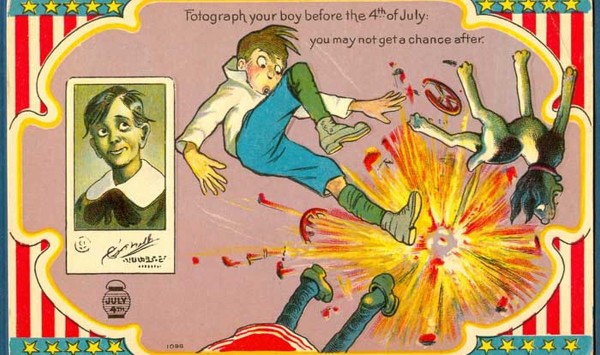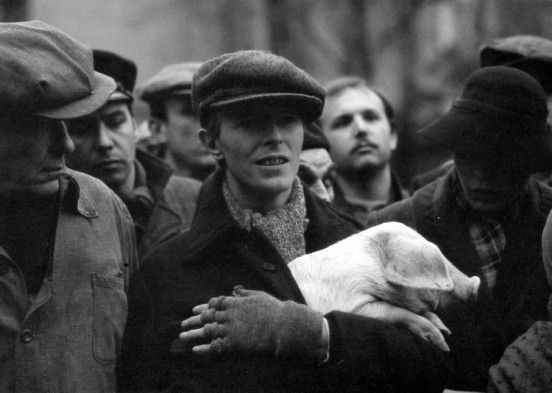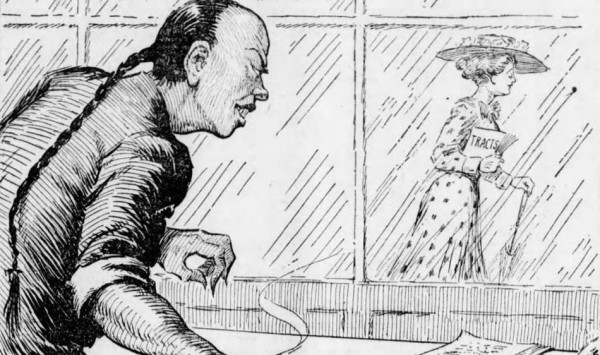FIRE, FUN & FIASCOES ON THE 4th (1887)

******************************************************************************************************************************** Brownstone Detectives investigates the history of our clients’ homes. The story you are about to read was composed from research conducted in the course of one of those investigations. Do you know the history of YOUR house? ******************************************************************************************************************************** A lot of accidents happen on the 4th of July. While it has been a day of celebration for Americans since its inception, certain citizens have tended to go a bit too far with their fireworks and other dangerous weapons. Back in 1887, a few days after Independence Day, a listing of the damages occurring and casualties effected on that date appeared in the Brooklyn Daily Eagle – once the authorities had had the time to assess the collective destruction. “Pistols and pyrotechnics of every kind were used with absolute impunity by even mere children,” the paper noted, “and the wonder is that more accidents did no occur.” The following list reflects a number of police blotters and lays out the accidents occurring primarily in the Eastern District (Williamsburg and Bushwick areas, and parts of Bed-Stuy). It is partial, but it will 1) boggle your mind, and 2) make you laugh. FIRE CRACKERS AS ASSAULT WEAPONS 8:30 – A boy whose identity could not be discovered threw a firecracker at the peanut stand outside the frame building at 21 Grand street and set it on fire. The building, which was owned and occupied by Sauer Brothers as a saloon, was damaged to the amount of $500 before the flames were extinguished. […]
THREE MEN AND A PIG (1892)

******************************************************************************************************************************** Brownstone Detectives investigates the history of our clients’ homes. The story you are about to read was composed from research conducted in the course of one of those investigations. Do you know the history of YOUR house? ******************************************************************************************************************************** (The setting of our story: The Eastern District of Brooklyn back in 1892 was a far more rural place that it is today. Comprised primarily of Williamsburg, Bushwick, and, parts of Stuyvesant Heights, the “E.D.,” as it was then called, was a semi-residential district filled with many small farmers living in frame houses and shanties, all of whom seemed to be living on the very edge of the world.) “Three men and a live, squeaking pig passed through Union avenue this morning.” The pig in the story “was an involuntary member of the quartet.” He was in the process of being stolen. “…(H)is shrill protests were heard by Policeman Farrington of the Nineteenth precinct, who traced the cries to the source. A man whom the policeman recognized as Thomas Farmer, Jr., of Union avenue and Frost street, was carrying a bag over his shoulder. “Farrington,” the story noted “gave chase and caught Farmer, who dropped the imprisoned pig on the sidewalk and showed flight. So desperate was his resistance that the officer was compelled to draw his club and a fierce fight of a few minutes’ duration terminated in the complete subjugation of Farmer.” Apparently, the two companions of the aptly named Farmer had fled. But they would not be gone […]
WONG SING BOW’S WHITE WIFE MINNIE (1877)

******************************************************************************************************************************** Brownstone Detectives investigates the history of our clients’ homes. The story you are about to read was composed from research conducted in the course of one of those investigations. Do you know the history of YOUR house? ******************************************************************************************************************************** In 1886, the life that Wong Sing Bow had been building up for years began to crumble before his eyes. A naturalized U.S. citizen, Wong Sing had been born “a subject of the emperor of China.” But he had been in America “long enough to save considerable money and to appreciate the beauty of Irish girls,” said one paper of the time. Wong Sing spoke English fluently and was often called upon by the authorities to interpret. With all that Wong Sing had going for him, it had originally seemed likely that he was going to have a good life. But this was the 1800s. And Wong Sing was Chinese. ANTI-CHINESE PREJUDICE IN 19TH CENTURY BROOKLYN After Wong Sing’s arrival in the U.S. around 1870, according to one paper, “the celestial youth immediately fitted himself in the groove of circumstances. “He decided to become intensely American. He shaved his cue off, doffed his Chinese garb, proclaimed his intention to become a citizen, and went to Sunday school ‘all samme like Melican man.’” Apparently, the papers, like most Americans, had no politically correct bent in those days. But the Chinese were located squarely at the bottom of the social construct – just slightly beneath the Irish and the Germans – and so […]